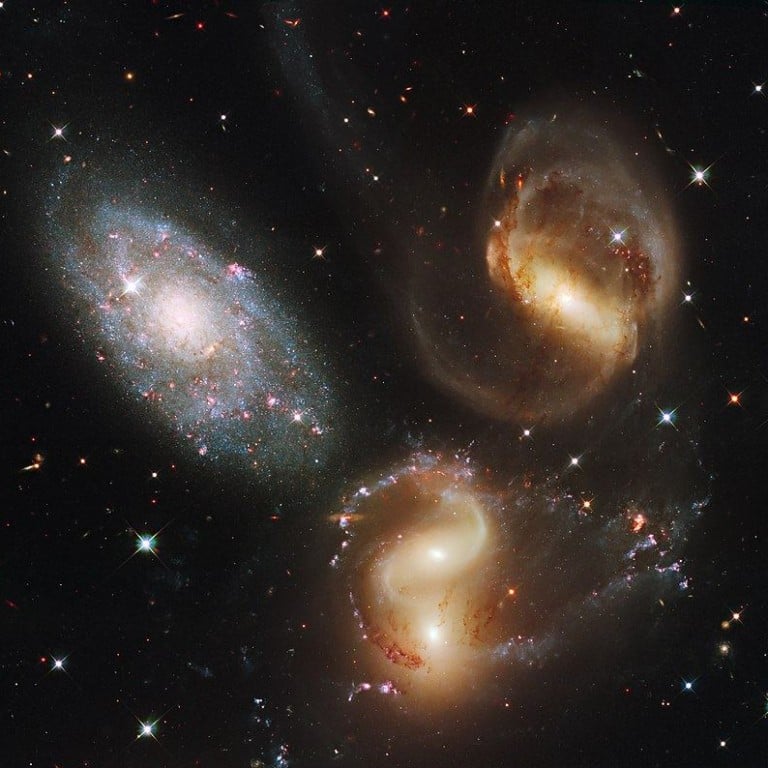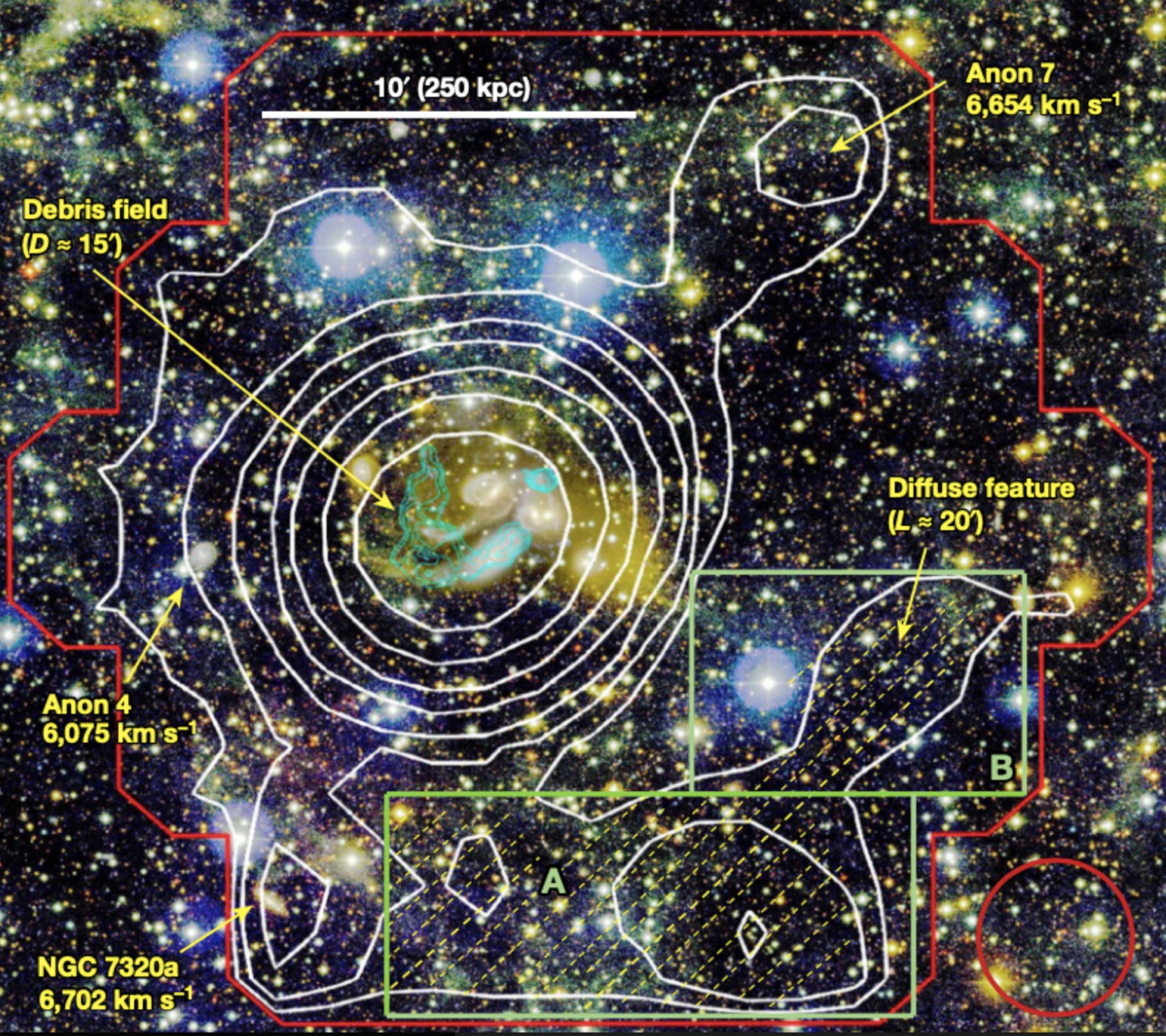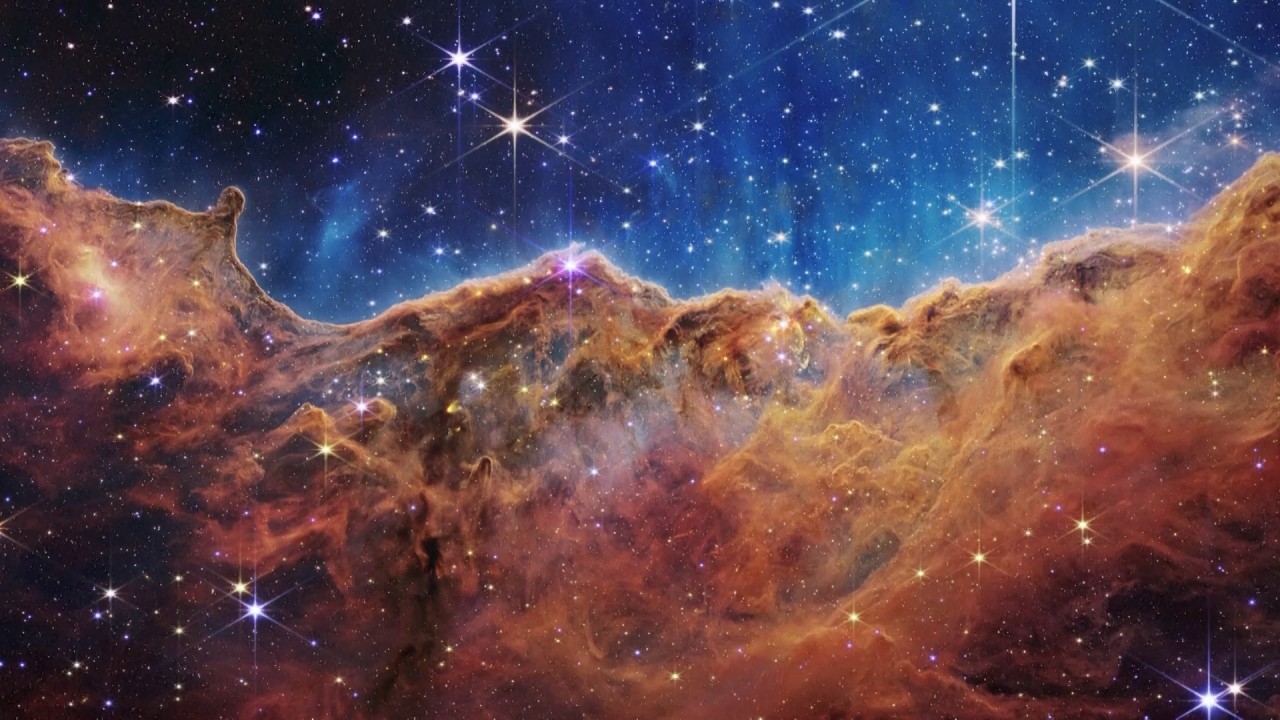
China’s FAST telescope finds biggest atomic cloud ever discovered
- Colossal cloud is 20 times larger than the Milky Way galaxy and probably a billion years old
- The finding could help scientists understand the origins of galaxies and reveal similar gaseous structures lurking elsewhere in the universe
The cloud, made up of hydrogen atoms, measures about 2 million light years across and is 20 times larger than our Milky Way galaxy, according to a paper published in the journal Nature on Wednesday. One light year is about 9.46 trillion km (5.88 trillion miles).
China’s FAST telescope detects radio flashes 3 billion light years away
“Since its discovery 145 years ago, Stephan’s Quintet has been extensively studied by various ground-based and space telescopes,” said lead author Xu Cong from the National Astronomical Observatories under the Chinese Academy of Sciences in Beijing.
To do this, they looked for hydrogen atoms in the area around Stephan’s Quintet. The atoms give off a unique “signature” emission that can reveal information about events that happened long ago.
It was a challenging task because of the atoms’ weak signals and the large area observed, but FAST’s well-tuned receiver and gigantic dish, which is the size of 30 football fields, made it possible, Xu said in an interview.

The researchers were surprised to see a mammoth gaseous structure emerge from the data. It was at least twice as large and on an order of magnitude less dense than any atomic cloud previously discovered.
The cloud’s location is also unusual as it is relatively far from the heart of Stephan’s Quintet. Most hydrogen atoms are found inside or near a galaxy as they are the building blocks of those galaxies and are constantly being combined under gravity to form molecules and eventually stars, Xu said.
China’s FAST telescope deepens mystery over cosmic blasts
In fact, the colossal cloud has probably been there for a billion years, he said.
“We wonder why it still exists at all, since atomic gas with low density should have been destroyed by the ultraviolet radiation in the cosmic background, according to current theories.”
The finding might mean that other massive gaseous structures lurk elsewhere in the universe and can only be observed by powerful radio telescopes like FAST, the paper noted.


